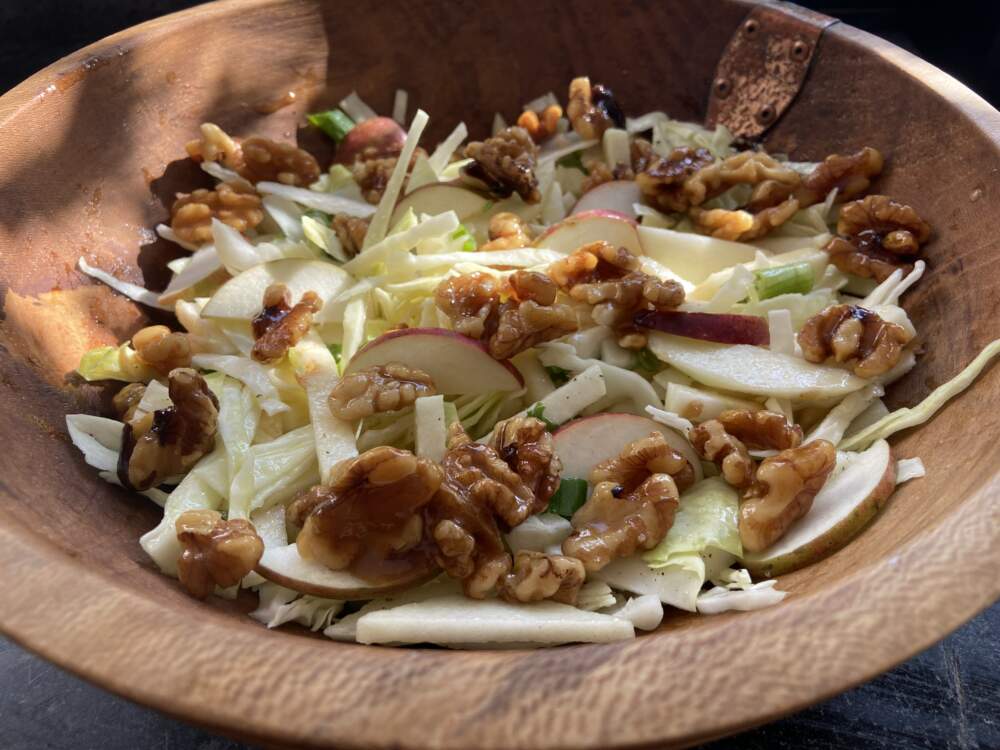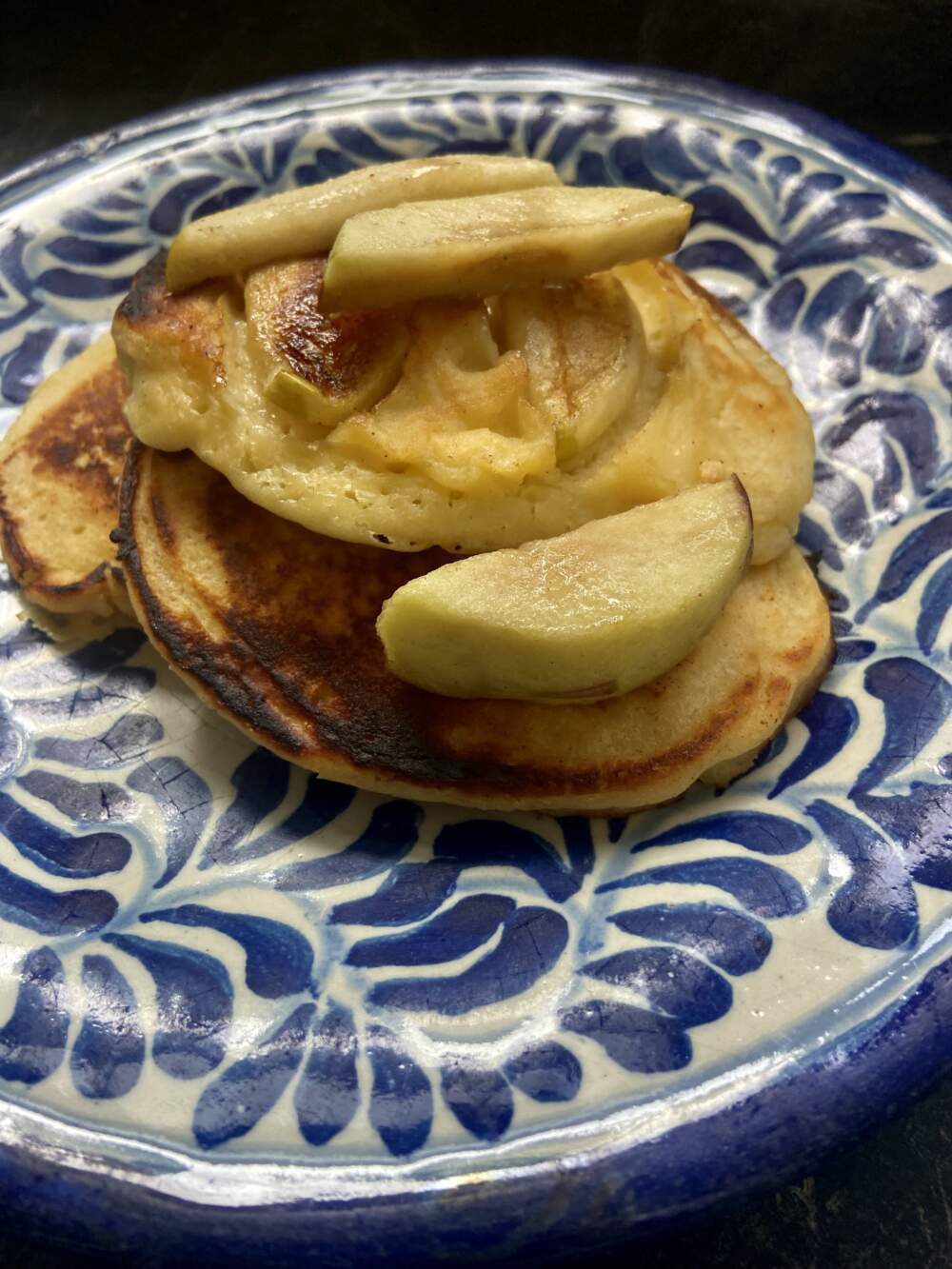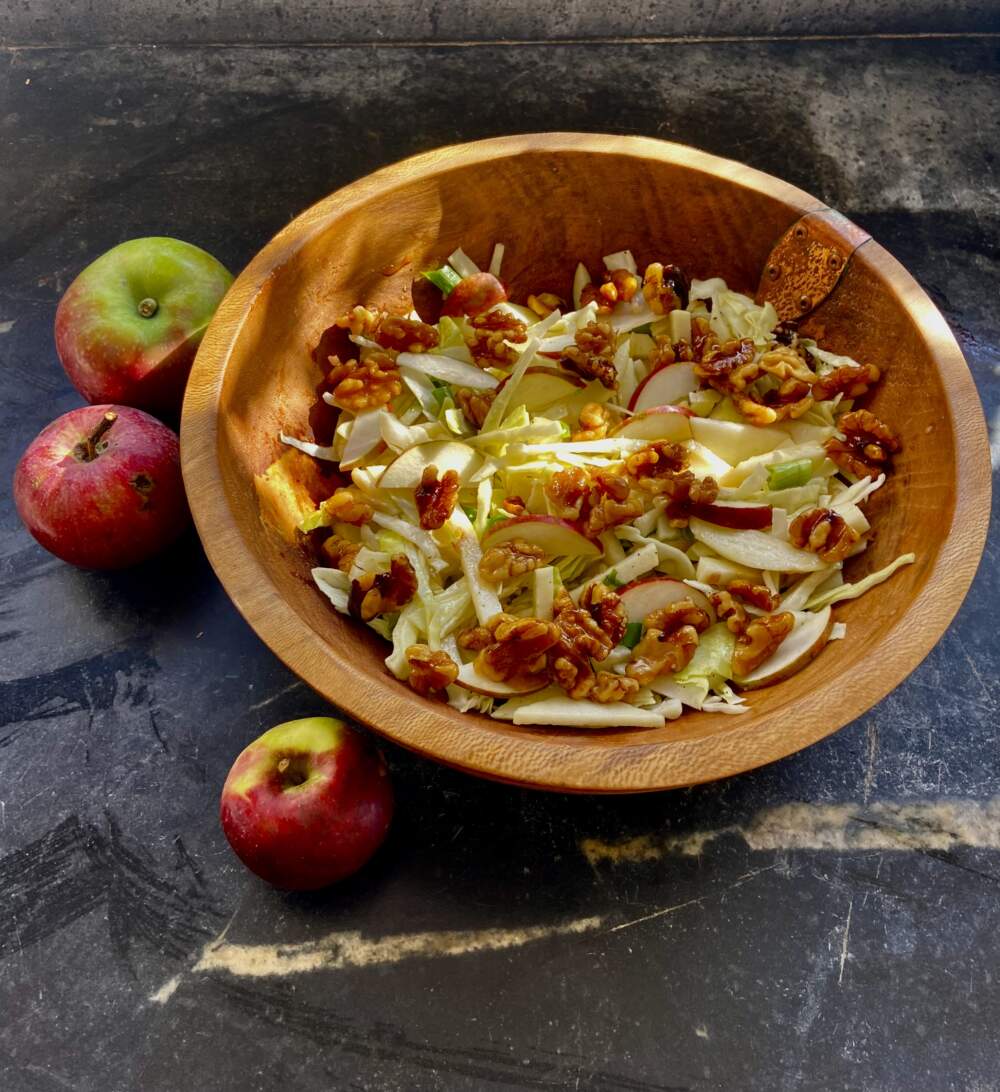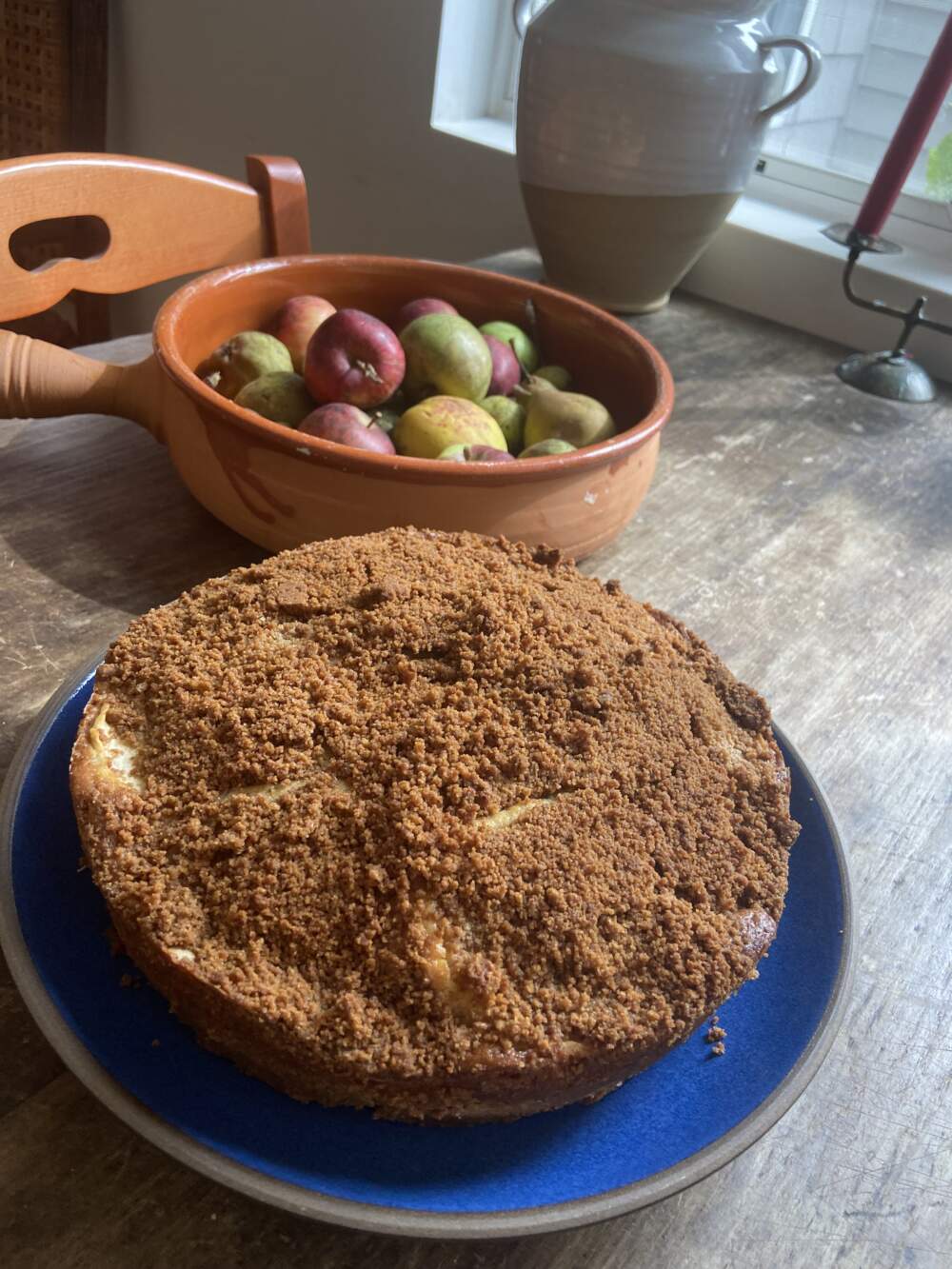Advertisement
How about them apples? Fall into autumn with sweet and savory recipes
Resume
Apples are everywhere. You can find them year-round. February, when you go to the grocery store, there they are. When you go to the grocery store in June, guess what you will still find?
But come October, apples are at their peak. Go ahead. Buy or pick a local apple. Close your eyes. Take a bite. Notice the crunch. The juice. The fresh sweetness, the sour edge, the almost-floral flavor that explodes. This is the time of year to look for new varieties of apples at local farmer’s markets, orchards and markets. Try these three new recipes and appreciate the humble apple all over again.
Shopping tips
- Look for apples that are free of bruises and feel heavy in your hand. They should have a fresh scent, and the skin should appear crisp, not soft. Look for local apples as they tend to be fresher.
- Store in the refrigerator or in a cool, dry spot out of direct sunlight.
20 apple varieties
There are more than 7,000 varieties of apples grown all over the world and, sadly, most of us only know a few generic varieties from our local grocery store. Search out heirloom and regional varieties of apples; you’ll be surprised to see how different the color, flavor, and textures apples can have.
Here's a guide to just a few commonly available apple varieties in the U.S.:
- Baldwin: These juicy apples are a New England and New York variety that has a great sweet-tart flavor. They are excellent to eat raw but will hold their shape when used for baking and cooking.
- Braeburn: This medium-sized apple with a yellow-red hue is popular for its juiciness and crispness, making it ideal for eating raw or cooking.
- Cameo: A fall apple common in the Northwest, with a sweet flavor. Best eaten raw, though it works in slow-simmered apple dishes.
- Cortland: These come from New York and are more than 100 years old. With a yellow-green skin with red streaks, they tend to be large apples and are quite tart and tender. They turn brown a bit slower than other varieties making them ideal for recipes like salads, or dishes where the apple is used raw. Not the best apple choice for baking and cooking.
- Empire: This apple variety was discovered in the Empire State of New York in the 1960s. A medium-sized red apple, Empires are a cross between Red Delicious apples and McIntosh. They are crisp and juicy, with a sweet and simultaneously tart flavor. They have a creamy white flesh and are an all-purpose apple.
- Fuji: These came from Japan in the 1930s, are named after Mount Fuji and were introduced to the U.S. in the '80s. They are a cross between two apples: the Red Delicious and Virginia Ralls Genet (also called Rawls Jennet). A sweet apple with a slight lemony, honey flavor, they can be used in cooking — though they do tend to cook down and should be cut in thicker than normal slices — or eaten as a snack.
- Gala: Used for cooking and eating raw, gala is sweet, tart, low-acid, and tender.
- Ginger Gold: This variety boasts a crisp, cream-colored flesh and a sweet, mild, tart flavor. Some find them to be spicy. They are great to eat raw or cook with, as they don't tend to brown quickly.
- Golden Delicious: Buttery with a light honey flavor, these apples are good baked or raw. They are quite mild but also have a sweet flavor.
- Granny Smith: These hail from Australia and were discovered in the late 1800s. Their distinctive bright-green flesh is quite tart and they are considered an all-purpose apple with a crunchy texture. They have a high level of acidity and are a good baking apple because they hold their shape well, but are also delicious as a snacking apple.
- Gravenstein: A red/bright gold apple, prized for its juiciness, sweetness and firm texture.
- Honeycrisp: Mild, crisp, juicy apples with a scarlet color over a yellow background. Discovered in 1960 as part of the University of Minnesota's apple breeding program, some find that they taste like freshly made apple cider. They have a great balance of sweetness and acidity.
- Jazz: A blend of many flavors — a bit like jazz music — and have a sweetness and beautiful aroma. Round with a rosy-red skin, often with yellow or orange streaks, these firm apples are low acid and excellent for cooking and eating.
- Jonagold: A blend of Jonathan and Golden Delicious varieties. A New York native, they tend to be large apples, have a honey flavor and are tart, crisp and juicy. Jonagold can be used for cooking or eaten raw.
- Macoun: Delicious raw and quite sweet. A favorite for making cider or applesauce. They are medium-sized apples, with deep red skin and creamy white tender flesh. Some think they taste vaguely of berries.
- McIntosh: Better known as "Macs," these are very popular in the U.S. and particularly New England. They were said to have been discovered in 1811 by John McIntosh and have a deep red color with a green blush. Known for their juicy, tangy, spicy flavor, this apple can be used for cooking or for snacking out of hand.
- Mutsu: One of my personal favorites. They have a Japanese heritage and are often also called Crispin. Sweet, thoroughly refreshing and exceptionally juicy, they can be used in cooking and eating out of hand. There is the Green Mutsu (firm flesh, crisp, juicy) as well as the Red Mutsu, which is medium- to large-sized.
- Paula Red: Sweet and tart and can be used for cooking or eating raw. They hail from Michigan and tend to arrive in markets early in the apple season. They look like McIntosh with a white flesh that is sweet, tart and berrylike.
- Pink Lady: A medium to large apple with sweet, almost pear-like flavor. This is a great choice for a baking apple.
- Red Delicious: The most popular American apples. They come from Iowa and were first harvested in the 1870s. Sweet, juicy and crisp, though many cooks find them boring. A one-note apple? These are best eaten raw and not used in cooking.
Buttermilk-almond pancakes with maple-glazed apple slices

Ground almond flour is mixed into this pancake batter with tangy buttermilk to create a fluffy pancake perfumed with apple slices cooked in maple syrup, cinnamon, ginger and nutmeg. Serve with maple syrup. The pancake batter will keep, covered and refrigerated, up to 2 days.
Makes 8 pancakes; serves 2 to 4.
Ingredients
The pancake batter:
- 1 cup all-purpose flour, 120 grams
- ½ cup almond flour, 60 grams
- 1 teaspoon baking powder
- ¼ teaspoon salt
- 1 large egg
- 1 cup buttermilk
- 2 tablespoons melted butter, plus butter for cooking
- 1 tablespoon maple syrup
The maple apples:
- 1 tablespoon butter
- Pinch ground ginger, nutmeg and cinnamon
- 1 large or 2 medium apples, peeled, cored and cut into ½-inch thick slices
- 2 ½ tablespoons maple syrup
Instructions
- Make the pancake batter: in a small bowl whisk the flour, almond flour, baking powder and salt.
- In a large bowl whisk together the egg, buttermilk, 2 tablespoons of melted butter and 1 tablespoon of maple syrup.
- Add the egg mixture to the flour mixture and stir until just incorporated, using a light touch. Set aside and let the batter sit for at least 15 minutes. (If making several hours ahead of time, cover and refrigerate until ready to cook the pancakes. Bring the batter to room temperature before using.)
- Prepare the apples: In a large skillet, melt the butter over medium heat. Sprinkle in the spices, stir, and cook for 20 seconds. Add the apple slices and cook for 2 minutes, gently stirring to incorporate all the spices. Gently stir in the maple syrup and cook until the apples look glazed. Remove from the heat and set aside.
- Preheat the oven to 275 degrees.
- Brush a griddle or large skillet with about 1 tablespoon butter until melted and just beginning to sizzle. Add ¼ cup pancake batter and gently top with 3 to 4 slices of the glazed apples. Repeat with 2 to 3 additional pancakes, being sure not to crowd the skillet. Cook for 2 minutes or until bubbles begin to appear on the surface. Gently flip the pancake over and cook for another 2 to 3 minutes, or until the pancakes are golden brown. Serve immediately with maple syrup on the side or place on an ovenproof plate in the preheated oven while you make the rest of the pancakes.
Apple, cabbage and maple-glazed walnut slaw with apple cider dressing

Call it a slaw, or call it a salad. This dish is full of crisp, bright fall flavors: juicy slices of sour sweet apples, crunchy cabbage, sweet nutty caramelized walnuts and the bracing flavor of apple cider vinegar and apple cider. You can put the slaw together hours ahead of time and make the dressing, but don’t toss until about 15 minutes before serving or it will get soggy.
Serves 4.
Ingredients
The walnuts:
- 1 tablespoon butter
- ⅔ cup walnut halves
- 2 tablespoons maple syrup or honey
The salad:
- 4 cups thinly sliced white or red cabbage
- 1 large or 2 medium tart apple(s), peeled, cored and thinly sliced and then cut into thin sticks
- 2 scallions, very thinly sliced
- Salt and pepper to taste
The apple cider dressing:
- 1 teaspoon Dijon mustard
- Salt and pepper to taste
- 1 ½ tablespoons apple cider vinegar
- 2 tablespoons apple cider
- 3 ½ tablespoons olive oil
Instructions
- Make the walnuts: in a small skillet heat the butter over medium heat until it begins to sizzle. Add the walnuts and cook, stirring, for 3 minutes. Add the maple syrup, stir and cook for another 3 minutes, or until walnuts are glazed and the maple syrup/butter is thickened. Remove the skillet and place the nuts on a sheet of wax paper, being sure to separate them.
- Prepare the slaw: in a medium-large bowl mix the cabbage, apples, scallions, and salt and pepper to taste. Cover and refrigerate if not using within an hour.
- Make the dressing: in a small bowl or jar mix the mustard, salt and pepper. Add the cider vinegar, cider and oil and whisk until smooth. The dressing can be made 2 days ahead of time.
- To serve: gently toss the salad with the dressing and sprinkle on the walnuts.
Apple sour cream coffee cake with gingersnap topping

I wanted a simple cake. Something that would work as well with breakfast coffee, afternoon tea, or dessert. I didn’t want to spend hours in the kitchen. And I didn’t want to go grocery shopping. I had just picked a decent-sized bag of apples from a friend's orchard, had a quart of sour cream, eggs, flour, sugar and a bag of gingersnap cookies. And an hour or so later I had this beautiful apple sour cream coffee cake with gingersnap topping. The cake may be even more moist and better the next day.
Serves 6.
Ingredients
The cake:
- 1 stick unsalted butter (½ cup) at room temperature, plus butter for greasing the pan
- 1/2 cup sugar
- 1/2 cup light brown sugar
- 2 eggs
- 1 teaspoon vanilla
- 2 cups flour, 240 grams
- 1 teaspoon baking soda
- 1 teaspoon baking powder
- ¼ teaspoon fine salt
- 1 cup sour cream
- 2 cups peeled and chopped apples*
- 1 apple, peeled, cored and cut into thin slices*
The gingersnap topping
- 1 cup finely ground gingersnap cookies, about 16 small cookies, about 4. 3 ounces**
- ¼ teaspoon ground ginger
- ¼ teaspoon ground cinnamon
- Pinch salt
- 2 tablespoons melted butter
*Choose a juicy fresh apple to add moisture to this cake. Think Fuji, Gala, Red Delicious, Ginger Gold, or Macintosh.
**Place the cookies in a food processor or blender and pulse until they are finely ground.
Instructions
- Thoroughly grease an 8 or 9-inch round cake pan or an 8 by 8 square baking pan with butter. Preheat the oven to 350 degrees.
- In a bowl with a mixer or using a standing mixer, cream the butter and white and brown sugars together until light and fluffy, about 5 minutes. Add the eggs, one at a time, beating well. Add the vanilla.
- In a bowl mix the flour, baking soda, baking powder and salt. Add half the flour mixture to the butter and sugar mixture. Add the sour cream and mix until well incorporated. Add the remaining flour mixture. Using a soft spatula or wooden spoon, stir in the chopped apples.
- Spread the cake mixture into the prepared pan and smooth the top. Carefully lay the apple slices on top, gently pressing them down into the batter.
- Make the topping: in a small bowl mix the ground gingersnaps, ginger, cinnamon, salt and melted butter together. Place the topping over the apple slices on the cake, gently pressing it down.
- Bake on the middle shelf for about 45 minutes to an hour, or until a toothpick inserted in the center of the cake once comes out dry and clean. Let cool on a wire rack.
- Cut into wedges and serve warm or at room temperature.
More apple recipes:
This segment aired on October 4, 2023.
